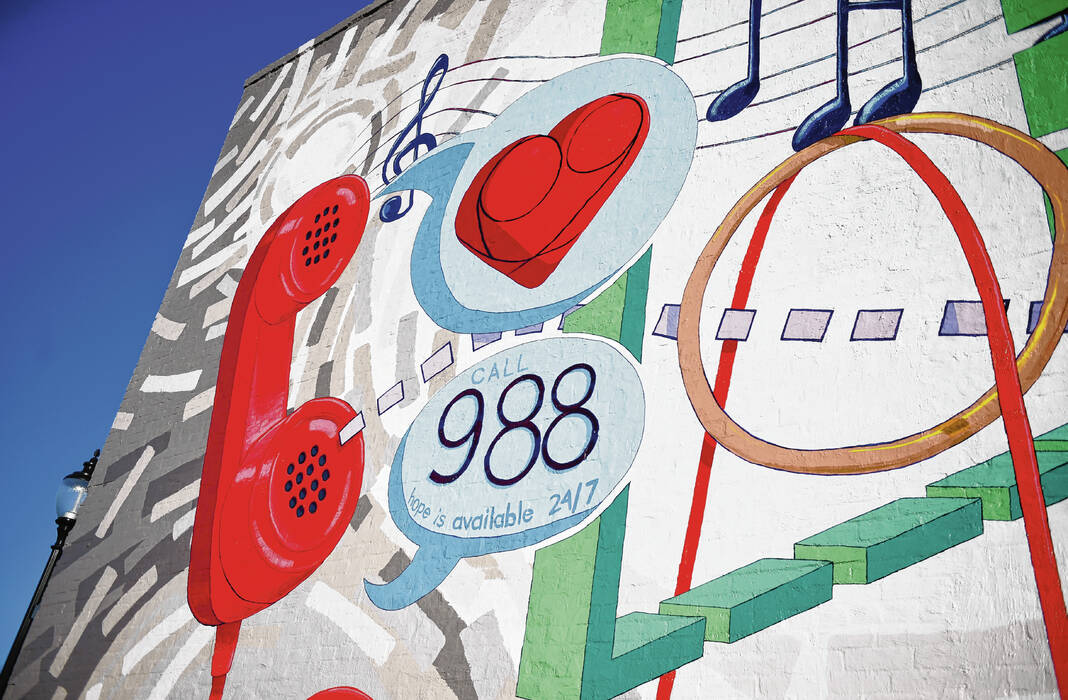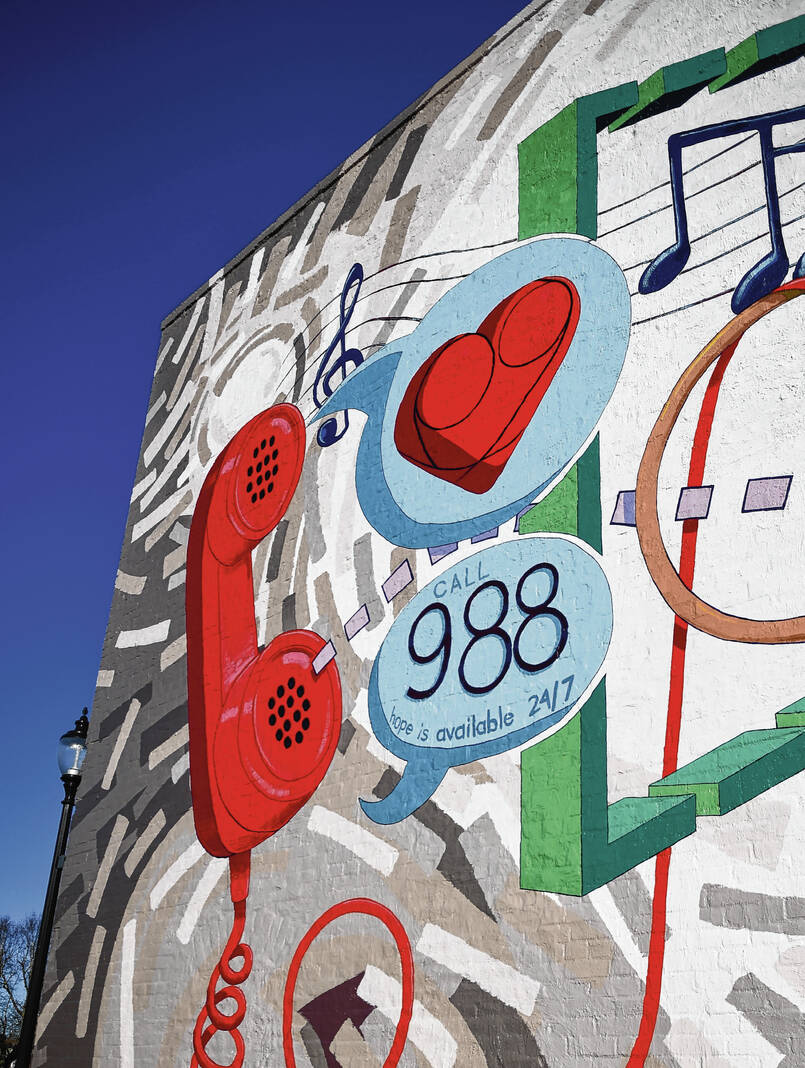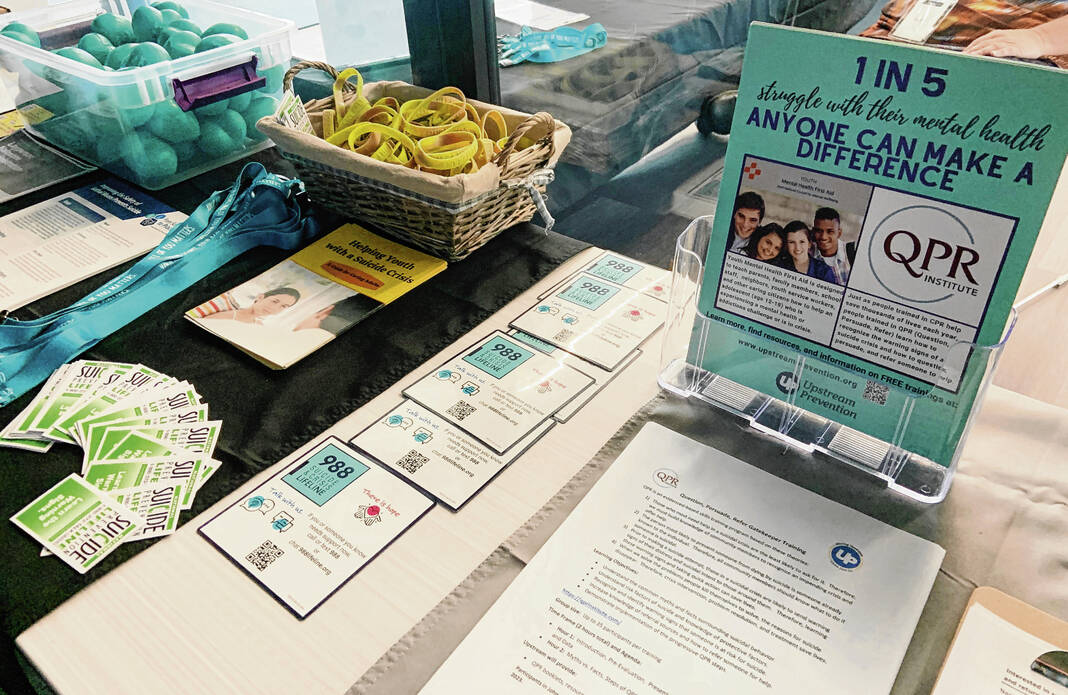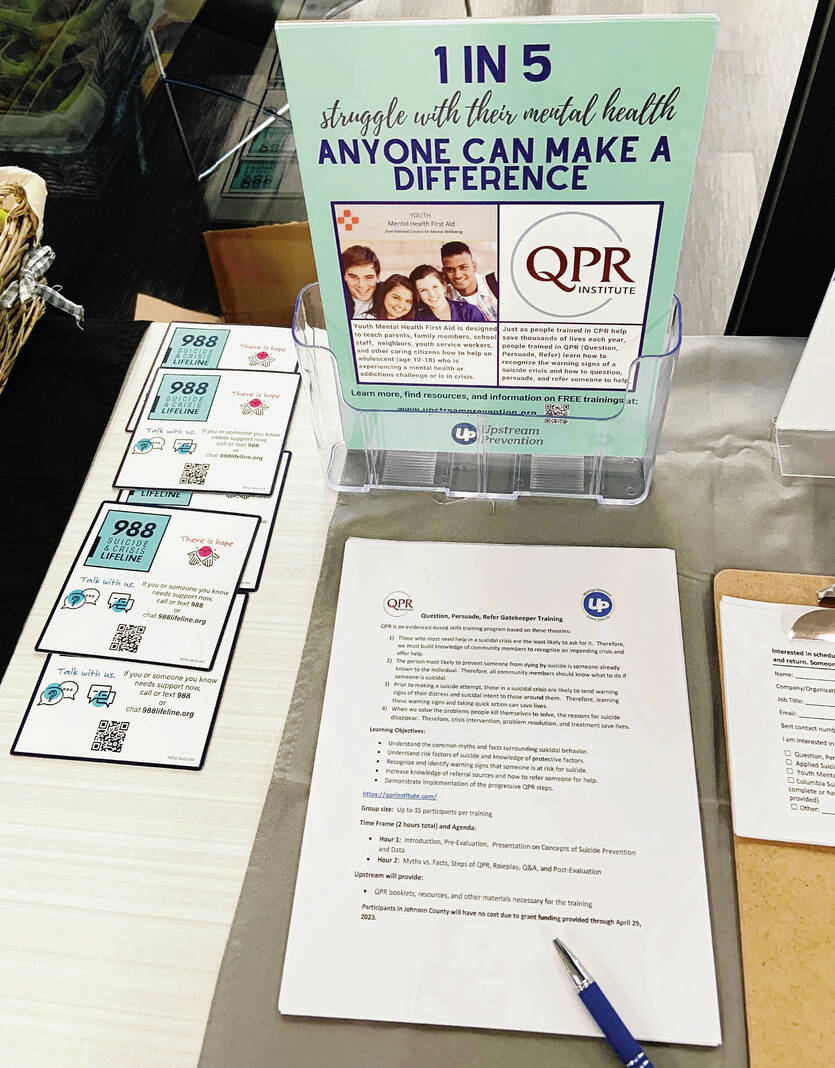Among the swirling colors and abstract shapes, a life-saving message stands out in downtown Franklin’s newest mural.
Set among a bright red telephone, musical notes and a heart are the words, “Call 988. hope is available 24/7.”
“That’s a significant portion of the mural, and very visible too, so we can educate people about what it is and how to call,” said Patrick Tisdale, the artist behind the mural, in October.
Efforts such as the mural are part of an ongoing campaign to inform people about the newly created 988 lifeline. Since going live in July, the national crisis and suicide lifeline has helped countless people connect to mental health care in their most dire moments.
“We’re trying to ensure that through the 988 efforts, we’re creating an infrastructure and a system that will allow anyone in crisis to have someone to contact, someone to respond and a safe place to find help,” said Chris Drapeau, executive director of prevention, suicide prevention and crisis response for the Division of Mental Health and Addiction within the Indiana Family and Social Services Administration.
The 988 line was created by Congress by the National Suicide Hotline Designation Act of 2020, which required the Federal Communications Commission to designate 988 as the universal number for a national suicide prevention and mental health crisis hotline.
Though the existing crisis line, the National Suicide Prevention Lifeline, remains in operation, this simpler number offers a number of advantages, Drapeau said.
“It provides a much shorter number that is easier to remember, and generated a lot of enthusiasm from mental health crisis response, not just in Indiana but across the country,” he said. “
On July 16, the line went live. From that point to Sept. 30, counselors fielded 1,066,394 calls, chats and texts via 988, according to the Substance Abuse and Mental Health Services Administration.
Upstream Prevention, a nonprofit promoting public health, specifically related to youth substance use and improved mental health, as well as the Suicide Prevention Coalition of Johnson County have been using public events and social media to spread information about the new line.
Every mental health and suicide prevention training, as well as other community events, that the groups have put on since July have focused on it, with resource cards to distribute to people with information about the crisis line.
Probably the most visible approach has been the mural downtown, said Hope Thompson, project coordinator for Upstream Prevention.
“That’s the biggest attention grabber,” she said.
A large focus has been explaining that the line is available for any kind of mental health crisis, not necessarily an immediate danger of suicide, Thompson said.
“I don’t know if that’s well known,” she said. “It can also be more than people who need it themselves. Everybody should be familiar with this number. If you want to help somebody, call the number. It’s available for everybody.”
Those who call 988 are given direct access to trained crisis counselors who can help people experiencing mental health-related distress, whether that’s thoughts of suicide, mental health or substance use crisis, or any other kind of emotional distress.
People can also reach out to the line if they’re concerned about a loved one.
“When people call, the idea is to walk them through the crisis that they are experiencing, and help them find hope for moving forward,” said Teresa Clemmons, executive director of A Better Way, an Indiana crisis center and agency focused on domestic abuse, sexual assault, suicide and homelessness. “We also want to help them find help that will guide them along to find a solution to whatever the root cause of their issue is.”
When people call 988, they hear a greeting message while their call is routed to the local Lifeline network crisis center — based on the caller’s area code. A trained crisis counselor answers the phone, listens to the caller, understands how their problem is affecting them, provides support, and shares resources if needed.
“We collaborate with the caller, to talk together about what is going on and what they might want to look forward to, as far as counseling and referrals,” Clemmons said. “Occasionally, if they are in a state of crisis that leads us to believe they are not safe, then we have to go forward with sending help their way.”
In the six months since 988 started, the team at A Better Way has found their work with the crisis line to be very stressful yet incredibly rewarding at the same time, Clemmons said.
“I don’t think there’s much that’s more important in the world right now than helping people who are in crisis,” she said. “We recognize the importance of this, so when you hang up the phone, after speaking with someone and they say they feel much better now, they feel safe now, they’re so thankful, anything like that, you feel such reward from the work you’re doing.”
Getting people immediate support has been the main focus of the 988 rollout in Indiana. State officials also have used it as a way to focus a wider crisis response service, Drapeau said.
“From the very beginning, we saw 988 as a way to not just address the call-line side of crisis response, but to look at the entire system and try to revamp how we do things in the state of Indiana,” Drapeau said.
Though the work has just started, health officials hope to establish resources such as mobile crisis teams who are trained and skilled in responding to anyone experiencing mental health-related distress.
An expanded crisis response system would also connect local residents to a network of local specialists who are familiar with the community and better equipped to provide culturally competent support and referrals to local resources and other lifesaving follow-up care.
“What other states have found is when you provide mobile crisis resources, it diverts people away from emergency rooms and from inappropriate in-patient psychiatric hospital stays, and it diverts them away from jails and prisons,” “It not only gives people a response that makes them feel safer to reach out when they’re in crisis, but it also saves a lot of money because emergency rooms, jails, prisons, in-patient units are very costly interventions.”
At this point, the key focus has been making more people aware of what 988 offers. The Family and Social Services Administration has worked to spread the word through the media, and is working on a marketing campaign to make 988 more visible.
“You don’t build a system this large in a year, or two years. We’re looking at his as a seven- to 10-year project that over time we can implement and trouble-shoot,” Drapeau said.










